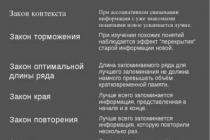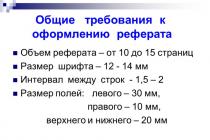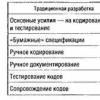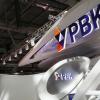Risk factors can be considered as external and internal characteristics, features of the situation that can give rise to risk, i.e. affect the deviation from the target. They are due to the peculiarities of the spheres in which they arise, i.e. sources.
The main risk factors are uncertainties of various nature inherent in the decision-making object and external conditions that have a significant impact on this object, as well as subjective motivations and reactions of the decision-maker.
It is advisable to identify the most important factors that generate risk and indicate what their main manifestations are, since knowledge of the sources of risk allows you to take early measures that weaken their effect.
On the one hand, all factors that somehow affect the risk can be divided into two groups:
- 1) objective, which include factors that are not directly dependent on the entrepreneur himself (inflation, competition, anarchy, political and economic crises, ecology, customs duties, the presence of the most favored nation treatment, etc.);
- 2) subjective - factors that directly characterize this entrepreneur(production potential, technical equipment, labor organization, choice of types of contracts with an investor or customer, etc.).
On the other hand, it seems appropriate to single out risk factors depending on the sources that generate them. Such an approach to the analysis of sources and risk factors can form the basis for the classification of risks for each specific activity.
The process of production and marketing activities of the enterprise can be divided into three main stages:
- 1) supply, the key problem of which is the process of procurement of raw materials;
- 2) production - starting with production and technological issues and ending with issues of management efficiency;
- 3) implementation finished products. Success is determined by the effective use of marketing principles.
There is a certain connecting element in which the interdependence of all three stages is manifested, - economic relations arising from the movement of value. It is with the help of such an element that the enterprise interacts with external environment. It is also necessary to mention information flows, since the lack of movement of information or its lack just cause the emergence of a particular risk, despite the fact that it is only thanks to the principle of asymmetric information that the implementation and development of market relations is possible.
At the stage associated with the acquisition of raw materials, one of the sources of risk is the state of the industry that produces raw materials. If in general there is a decline in this industry, problems associated with the organization of production, settlements, and financial resources are recorded, then this industry can become a powerful source of risk for enterprises using its products for production purposes. The risk factors in this case are:
- raw material quality and stability;
- raw material prices, their dynamics, compliance general level inflation, correlation with prices for similar products foreign production, correlation of price with quality;
- stability and reliability of suppliers;
- the cost of transporting raw materials;
- losses during transportation;
- the cost of importing raw materials from abroad;
- method and schedule of payment.
A fairly powerful source of risks are contractual relationship arising from the supply of raw materials, especially from abroad. Risk factors in this case are reduced to the preparation and implementation of contractual conditions, including:
- terms of delivery, including the obligations of the parties to transport the goods, the availability of packaging and labeling, the moment of transfer of ownership of the goods;
- terms and schedule of payment, including the amount and terms of prepayment or deferred payment;
- distribution of payment for transport and overhead costs;
- product quality criteria (compliance with GOSTs and TU);
- penalties for non-fulfillment of the terms of contracts in case of violation of the terms of payment for the delivery or the quality characteristics of the goods.
In addition, in this case, the sources of risks may be an imbalance:
- terms of contracts for the supply of raw materials and shipment of finished products;
- the timing of the supply of raw materials and its release into production;
- cash flows from the point of view of timely provision of payment for the raw materials supplied according to the contracts.
Management problems at the stage of procurement of raw materials as a source of risk stem partly from the rationality and balance of the terms of contracts and can give rise to the following factors:
- the process of forming stocks of raw materials in the warehouse (their excess or shortage);
- organization and quality of warehouse accounting for the movement of raw materials;
- compliance with the storage conditions of raw materials;
- effective distribution of responsibility between employees - participants in the process of procurement and release into production of raw materials and control over its observance.
All of the above risk factors that appear in the first stage can be exacerbated by the fact that the process of purchasing raw materials, like the production process, can be seasonal. Accordingly, there is a need to purchase significant stocks of raw materials, taking into account seasonal fluctuations in demand, which leads to problems associated not only with planning the optimal amount of stocks of raw materials, but also with the coordination of cash flows.
At the production stage the production and technological cycle may appear as one of the sources of risks. Indeed, significant losses of material, labor, financial and other resources may occur in the following cases:
- in case of non-compliance with technology requirements;
- as a result of a stop in production due to various reasons, for example due to refurbishment;
- as a result of theft or negligence of employees involved in production;
- due to non-accounting for deviations of actual losses of raw materials from the normative ones within the technological cycle;
- in the process of maintaining documentation;
- in case of violation of working conditions, including the socio-psychological climate, the size and stability of wages;
- due to industrial injuries and non-compliance with safety regulations;
- as a result of an environmental factor, such as environmental pollution, etc.
All of the above refers to the risk factors that arise within the production and technological cycle. In the production process, risk factors can also be caused by incorrect and inefficient management. In this case, they may include:
- compliance with the conditions of storage of semi-finished products and finished products;
- formation and execution of the production schedule;
- determination of material and administrative responsibility for the occurrence of losses that occurred through the fault of employees and administration.
Main sources of risk at the stage of sale of finished products are the directions of the company's policy in relation to the main elements of the marketing mix - product, price, distribution methods and incentive methods. However, the formation and implementation of such a policy according to the basic principle and philosophy of marketing is entirely determined by the behavior and wishes of consumers.
Peculiarities become a significant source of risk for enterprises consumer behavior and structure of consumer preferences. Accordingly, the risk factors in this area are:
- market growth rates;
- market volume;
- stage life cycle market;
- elasticity of demand;
- segmentation of consumers, orientation of the enterprise to certain target segments;
- satisfaction of consumer preferences. Specific risk factors inherent in this area of production:
- structure of demand in the markets of goods and consumer goods, and industrial purposes;
- cyclicity / seasonality of demand;
- focus on different target segments in different markets, causing the need to build differently marketing policy for different products.
The product policy used by the enterprise can also be a source of risk, covering:
- product range and its structure;
- consumer characteristics of goods and their compliance with consumer preferences;
- stages of life cycles of goods and their consistency in time;
- offering related, complementary and other products;
- packaging;
- service maintenance.
Sources of pricing policy risk are:
- the type of market in which the enterprise operates, the type of competition;
- the structure of the offer on the market and the type of product;
- consistency in the dynamics of prices for products and raw materials;
- formation process trade allowance(pricing method).
Sources of marketing policy risk:
- goods distribution channels used (their length, breadth);
- intermediaries involved in the process of commodity circulation;
- conditions of work with intermediaries, including contractual ones (consistency of the terms of contracts for the supply of raw materials and the shipment of finished products, as well as the balance of cash flows). Marketing communication policy (formation system
demand and sales promotion - FOSSTIS) involves:
- rational use means of marketing communication;
- organization of the advertising process, starting with the definition of the desired response target audience and ending with media planning;
- the use of various methods of sales promotion. Competitors and their behavior in the market are also a powerful source of risk. As risk factors in this case, the following can be considered:
- type of competition;
- market shares occupied by competitors, their dynamics.
When analyzing competitors, attention should be paid to the same aspects of activity as when analyzing your own elements of the marketing mix, namely:
- commodity policy;
- pricing policy;
- sales policy;
- FOSSTI's policy.
As a result of this analysis, a conclusion should be drawn regarding competitive advantage the analyzed enterprise and its main competitors. Weak sides specific enterprise in relation to competitors will also be risk factors.
Sources of risk can be not only the production aspects of the enterprise, but also its financial side. In this case, the sources will be both internal, caused by the financial management process of the enterprise, and external, since the operating enterprise cannot be considered as a closed system, it operates in close relationship with the surrounding space, described by the elements of the macro- and microenvironment.
In addition, a powerful source of risks are information flows through which interaction is carried out. structural divisions within the enterprise and the connection of the enterprise with the environment.
There are two possible approaches to the description and classification of sources of risk, manifested in the financial aspects of the enterprise.
First approach assumes to single out as sources of risk external in relation to the enterprise and internal sources. External sources are, first of all, the actions of the main financial counterparties (suppliers, contractors, fiscal and regulatory authorities) at the micro level, as well as at the macro level - the state and change of the existing nationwide or global financial system. Accordingly, internal sources are determined by the actions and relationships that arise in the process of production and economic activity within the firm. This approach has a significant drawback associated with difficulties in trying to assess the effectiveness and adequacy of the managerial response to changing environmental conditions.
When forming second, a more preferable approach, proceed from the premise that the result of external and internal sources of risk will be some changes associated with the attraction (acquisition, formation) financial resources and their spending. In addition, a significant part external sources risk can be effectively neutralized due to competent intra-company financial management. Thus, it is proposed to divide all sources of risk associated with the financial aspects of the enterprise's activities into two groups: the asset management process and the liability management process. At the same time, it is incorrect to attribute this approach strictly to the production stage, since the need to manage assets and liabilities is present both at the stage of procurement of raw materials and at the stage of formation of financial results.
According to the second approach, one of the main sources of risk for any enterprise is the process of using financial resources. Risk factors in this case can be:
- structure of accounts payable;
- ratio of own and borrowed money;
- structure of working capital sources;
- control financial results, including the cost structure, the formation and use of profits. Asset efficiency can also be considered as a source of risk. In this case, the factors are:
- the structure of assets in general, including fixed and current assets;
- efficiency of formation and use of fixed and working capital.
Lack, incompleteness or poor quality of information can also be sources of risk. In this case, the risk factors are:
- lack or insufficient quality of market research conducted;
- loss of information in the process of its movement within the enterprise (as a result of poor-quality accounting, analysis or incomplete transfer from one structural unit or employee to another);
- distortion of information received from counterparties (suppliers, contractors, intermediaries, other participants in the market infrastructure) or transmitted to them;
- ignoring information describing changes in the parameters of the external macro environment.
The functioning of the enterprise is affected by risks in the form of events (actions) that impede the achievement of commercial goals (strategic, tactical).
Risk Characteristics
- lost (under-received) benefits;
- direct loss;
- lack of results of activity;
- events that can cause losses or non-receipt of income in the future.
Types of enterprise risks are interrelated and interdependent. A change in one may affect others, increasing or decreasing their severity.
Risks characterize the following concepts:
- Economic essence, connection with the economic activity of the enterprise, the impact on the formation of profit.
- The probability of formation, which is manifested in the fact that a negative event may or may not occur in economic activity, depending on a number of factors.
- Uncertainty of consequences, lack of regularity. According to the degree of risk, the consequences of the economic process can vary in a significant range, being reflected in the form of material losses and in the formation of the revenue side.
- Expected adverse impact. The consequences of risks affect the results of the production process positively or negatively, but it is customary to evaluate them from the perspective of possible negative consequences. As a result of risks, loss of profit and capital itself is possible, which in critical circumstances is fraught with the bankruptcy of the company.
- Level variability, variability due to the influence of factors that are in continuous dynamics.
- The subjectivity of the assessment, that is, its unequalness, depending on a number of factors (reliability of information, completeness, qualifications of managers).
Classification system
The classification of risks implies the systematization of their set according to different criteria, uniting subsets into single concepts.
When creating a classification, concepts related to the characteristics of risks are taken into account, including:
- period of education;
- causes and phenomena contributing to the occurrence;
- counting method;
- type of consequences;
- coverage area.
According to the period of occurrence, risks are divided into:
- promising;
- retrospective;
- current.
By the nature of accounting, risks are:
- Internal, caused by the work of the company based on business activity its management, indicators of specialization, productivity, marketing strategy, technical equipment.
- External, not directly related production process and formed by economic, political, geographical reasons.
Depending on the consequences, the risks are divided into:
- Speculative. They can cause both losses and additional profit due to sharp fluctuations in exchange rates, legislation (on taxes), market conditions.
- Clean. Their characteristic feature are mandatory production losses due to natural disasters, wars, accidents.
According to the field of education, risks are divided into:
- Production associated with non-fulfillment of plans and production obligations of the organization due to the influence of (adverse) external circumstances or the erroneous use of new fixed or working capital. The main reasons for its occurrence can be:
- reduction of planned output volumes;
- increase in costs;
- payment of inflated amounts of mandatory payments;
- non-compliance with the terms of supply;
- breakdown (destruction) of equipment.
- Commercial, arising from the sale of goods (services) manufactured or purchased by the organization. The main reasons are:
- reduction in the amount of sales for opportunistic or other reasons;
- increase in the cost of purchasing products;
- decrease in the mass of goods in circulation;
- increase in costs.
- Financial, depending on the possibility of default by the company due to:
- depreciation of the investment portfolio due to currency fluctuations;
- failure to make payments.
- An insured event or a chance of an insured situation arising from a transaction, under which the insurer is obliged to pay compensation.
For reasons of occurrence, risks are divided into political (war, prohibition of export / import of goods, prohibition of movement / movement across the border) and economic, caused by changes in the organization or in the economy of the state (fluctuations in market conditions, imbalance of liquidity, falling level of management).
Based on the production process, the risks are divided into:
- Organizational, arising from the mistakes of employees or management of the company, violations internal control or work rules.
- Market, depending on market conditions (commodity value, demand for goods, loss of liquidity, exchange rate fluctuations).
- Credit related to the violation by the counterparty of the deadline for fulfilling obligations under the transaction. They are related to enterprises with receivables, to companies engaged in the securities market.
- Legal, when losses arise due to lack of accounting legislative norms, their changes during the period of the transaction, the incorrectness of the preparation of documentation, the inconsistency of the laws of different states.
- Technical and production related to causing harm environment, with accidents due to disruption of the facility due to design and construction errors.
Taking into account the potential consequences, the risks are classified into:
- Permissible, when, due to the lack of some actions, the company is threatened with loss of income (profit). In this case, commercial activity is not deprived economic feasibility, since the amount of losses is not greater than the size of the projected income.
- Critical, in which the organization is threatened with the loss of revenue, which obviously overlaps the projected profit. In the worst case scenario, the company is threatened with the loss of all funds used to implement the deal.
- Catastrophic, when the company loses solvency. The amount of losses may exceed the size equity enterprises. This category includes situations that threaten an environmental disaster or the safety of citizens.
Risk assessment
Requires analysis and evaluation, including regular identification of factors and species, combined with their quantitative determination.
Sources for performing risk analysis and assessment are information from:
- company reporting;
- list of states;
- process flow maps;
- agreements, contracts;
- cost indicator;
- financial (production) plans.
The assessment procedure includes qualitative and quantitative stages.
At the stage of qualitative assessment, the sources and causes of risk, the work in which it is formed and affects the economic process, are identified. Qualitative results serve as initial information for quantitative analysis, which evaluates only problematic moments in the course of a particular operation.
At quantitative analysis numerical parameters are determined for individual risks, for potential damage from them. The completion of the analysis is the preparation of a system of countermeasures and the calculation of the cost of their implementation.
Quantitative risk assessment uses methods:
- statistical, studying the probability of damage according to the indicators of the previous period;
- analytical, predicting the possibility of damage based on mathematical models and used primarily for threat analysis in investment projects;
- expert assessments that combine logical and statistical techniques when studying the results of surveys, which are the only source of information;
- analogues used when it is impossible to use other methods and identifying common dependencies for extrapolating them to the object under study.
Depending on the type of impact, the following risk management methods are used:
- Reducing the risk that reduces the likelihood by diversifying production, replacing technology, changing strategies for working in problem countries.
- Persistence of risk - observation without impact. Acceptable for situations where the boundary of the formation of a problem is at an acceptable level or active measures are impossible or not economically justified.
- Renunciation of risk, which involves its elimination by switching to safe technology, refusing to cooperate with a dubious partner, or selling a troubled asset.
- Transfer of risk to other persons (insurance, insurance).
- Transfer of risk to the counterparty (through obligations under the contract), when the impact is ineffective or impossible, and the risk limit is higher than the acceptable indicator (fines, factoring without recourse)
- Transfer of risk to outsourcing by transferring non-core functions to other organizations (transportation activities, accounting automation).
The choice of assessment or management methods is made for each risk separately, taking into account the probable damage and the possibility of creating problem situations.
Risk- the possibility of a negative (dangerous or unfavorable) event arising from the uncertainty of the future.
Business risk– the possibility of loss of assets as a result of the occurrence of a negative event.
Object of risk in business- assets that may be lost as a result of a negative event. It can be in investment activity: net present value, profit, income, capital. By default, the object of risk is assumed to be net income.
Subject of risk- a natural or legal person for whom a negative event is possible. One negative event can have several risk subjects. For example, in case of bankruptcy of an enterprise, the subject of risk is the owner of the enterprise and the bank that issued the loan. For the owner - a dangerous event, for the bank - an unfavorable event.
Risk factors- Causes that cause a negative phenomenon. Risk factors often do not have a cost estimate, then they are expressed in physical units.
For example, violation of the terms of delivery of materials - 1 month. To make a management decision, the physical expression of risk factors is transformed into a value one.
Sources of risk- the subject of influence, i.e. something that generates or causes an adverse event on a particular risk object, leading either to a decrease or loss in the value of an asset or financial instrument that is an object of risk, or to a deterioration in the quality of processes (failures), financial losses of the bank. These reasons can be both external and internal and have both an economic or political nature, and a specific one related to the individual characteristics of the procedures and technologies for carrying out operations and processes in a particular bank.
The main source of risk is the decisions and actions of a person, the result of which is the realization of specific adverse events that bring loss to the bank. According to its methodological nature, management risk is one of the sources of operational risk.
Indicative points and risk lines- those that define risk-free zones from zones with increased risk. In business, this is the break-even line and the demand line.
safety edge– the interval to the right and left of the mathematical expectation of risk. In trust. interval falls 70% of all cases.
Risk zones:
The zone of luck is the zone of viktivnost. Assessing an average businessman, we say that he is lucky and does not fall into the zone of victivity.
16. Classification of risks on various grounds
Classification of risks - their systematization according to 2 criteria: the degree of integration and the degree of consistency.
According to the degree of integration, there are:
1) Single risks depending on one factor - IV level
2) Private risks that combine several close single risks - III level
3) General risks that combine all systemic or non-systemic risks - II level
4) Integral risk - the sum of general risks - I level
Project risk system:
Force majeure risks– risks of uncertainty of circumstances. They are not insured, because no insurance company can pay for these risks.
Commercial risks:
- industry risks high-tech industries;
- information risks related to industrial espionage.
In addition, commercial risks are due to the problem of the quality of raw materials.
Operational risks include:
Single, due to the low quality of management - transport, - trade,
Organizational, - property, - production.
Transport risks There are 2 types: - carbo - causing damage to the cargo, - hull - causing damage to the vehicle.
Trading risks associated with loss of income: - delay in payments, - refusal of the product,
Buyer insolvency.
Property risks associated with the loss of property due to sabotage and accidents.
Organizational risks associated with incorrect selection of employees, their abuse and incompetence.
Production risks associated with violation of delivery dates, short delivery and delivery of low-quality materials.
- inflation risk when money income depreciates faster than it grows,
- deflationary risk: occurs when the price level falls,
- currency risks- loss of assets associated with changes in the exchange rate,
- risk of lost profit: occurs when any event (insurance or hedging) is not implemented.
The concept of risk is closely related to the category of uncertainty. The problem of uncertainty is considered in economic theory quite wide and represents a separate line of research. The American economist Frank Knight was the first to draw attention to the existence of this problem in his book "Risk, Uncertainty and Profit", published in 1928, which has not lost its theoretical significance to this day.
Decision-making under conditions of uncertainty, which generates risk, is characterized by the fact that it is impossible to unambiguously foresee their consequences. Those. any options economic activity are options with different levels of expected profit and are characterized by different probability (objective or subjective) that this profit will be received in this volume. Such uncertainty leads to the fact that profit becomes a random variable, which can be maximized only if a number of hypotheses are accepted and when the entrepreneur has a certain risk appetite as a measure of the degree of uncertainty, i.e. profit acts as a payment for risk.
The causes of uncertainty and the risk associated with it are divided into three groups.
First group. Most of the processes associated with the economy are fundamentally non-deterministic, i.e. uncertain. Such, for example, is the scientific and technical progress, about the course of which it is impossible to make an accurate forecast. It is also difficult to foresee various natural phenomena, climate change, the development of consumer tastes, etc.
Second group. We can talk about economically optimal information incompleteness, since it is often more expedient to work with incomplete information than to collect extremely expensive almost complete information. This group also includes the incompleteness of information, due to the limited capacity for its processing, since this limitation is explained by economic reasons. This also includes inaccuracies that arise due to approximate methods for estimating data, for example, sample observations and expert opinions. Reducing these inaccuracies also requires some additional cost.
Third group. There is, so to speak, "organized" uncertainty, or information asymmetry. It is caused by the fact that often some economic agents consider it expedient to hide some of the information for economic, political or other reasons. For example, it is very difficult to predict the possibilities of foreign trade operations with strategic goods.
The uncertainty of the situation is characterized by the fact that it depends on many variable factors, counterparties, whose actions cannot be foreseen with acceptable accuracy.
To date, uncertainty that generates risk is understood primarily as a situation where, to a greater or lesser extent, there is no information about the structure and possible states of both the object of research and decision-making, and the environment.
Uncertainty - a fundamental characteristic of insufficient provision of the economic decision-making process with knowledge regarding a certain problem situation. Uncertainty can be interpreted and detailed as unreliability or ambiguity.
According to the level of probability of occurrence of events, three main types of uncertainty are distinguished: complete uncertainty, partial uncertainty, complete certainty.
Complete uncertainty- this is a kind of uncertainty, which is characterized by close to 0 predictability of the occurrence of an event.
Complete certainty characterized by close to 1 predictability of the occurrence of events (the opposite of complete uncertainty and gives the company the opportunity to predict with 100% probability the prospects for its development and the market).
Partial uncertainty- this is a type of uncertainty, which is characterized by the fact that the probability of an event, and, accordingly, the degree of its predictability, is in the range from 0 to 1 (in comparison with the two previous types of uncertainty, which exist only in theory, this species uncertainty is practical).
The presence of uncertainty in the activities of the enterprise causes the emergence of risks, without taking into account which the effective development of the enterprise is impossible. Any enterprise bears the risks associated with its production, commercial and other activities. The risk factor makes the entrepreneur save financial and material resources, reverse Special attention for calculating the effectiveness of new projects, commercial agreements, etc. The risk factor in entrepreneurial activity especially increases during periods of instability in the state of the economy, which is accompanied by inflationary processes, too expensive loans, etc.
Economic risk is the probability (threat) of loss by the enterprise of part of the income as a result of the implementation of production and/or financial activities.
There is a directly proportional relationship between the level of profit and the amount of risk: the higher the expected profit, the higher the level of risk.
Object of economic risk – economic system, efficiency and conditions of its functioning, which are not exactly known in the future. Subject of economic risk - a person (or team) interested in the results of managing the risk object and who has the competence to make decisions regarding the risk object. Source of economic risk - these are factors (phenomena, processes) that cause uncertainty of results, conflict in the functioning of the enterprise.
Main characteristics The risks come down to:
risk is always present at all stages of the activities of enterprises, regardless of the scope of their operation, while the only difference can be its degree;
Complete elimination of risk is impossible due to a number of reasons, both objective and subjective (in particular, the lack of complete information, the constant development of both a separate market and the economy as a whole, etc.).
The set of factors that influence the level of economic risk is usually divided into external and internal. External factors should be understood as those whose sources are external to the enterprise. At the same time, external factors can be divided into factors of the external micro- and macroenvironment. In particular, external factors include:
Change of legislation;
Unintended actions of authorities government controlled;
Scientific and technical progress;
Violation of obligations under contracts;
Change in tax policy;
Price change;
Changes in bank interest rates and lending conditions;
Changes in tax rates and customs fees;
Change in ownership and lease relations;
Change in labor law;
Competition, especially unfair;
Political situation;
international environment;
Economic instability in the country of operation;
inflationary processes;
Force majeure, etc.
As for internal risk factors, there are four groups:
Enterprise strategy;
Principles of activity of the enterprise;
Resources and their use;
Quality and level of use of marketing.
The sources of risk are also: lack of professional experience of the management of firms, insufficient economic knowledge, financial miscalculations, poor organization of work, dubious moral and ethical principles, insufficient adaptability (maneuverability) of the company to changes in the market environment, lack of proper experience in marketing, etc. .
Risk functions
You can note following features risk:
1. incentive risk function, which manifests itself in two aspects:
constructive aspect, which consists in the study of risk sources in the design of operations and systems, the design of special devices, operations, forms of transactions that exclude or reduce the possible consequences of risk as a negative deviation;
destructive aspect, which manifests itself in the fact that the implementation of decisions with unexplored or unreasonable risk can lead to the implementation of objects or operations that are adventurous, voluntaristic;
2. protective function risk also has two aspects:
The historical and genetic aspect lies in the fact that the legal and individuals are forced to look for means and forms of protection against the undesirable realization of the risk;
the socio-legal aspect lies in the objective need for legislative consolidation of the concept of "legitimate risk", legal regulation insurance activities;
3. risk compensating function can provide a compensating effect (positive compensation), i.e. additional compared to the planned profit in case of a favorable outcome (realization of a chance);
4. socio-economic risk function, which consists in the fact that in the process of market activity, risk and competition make it possible to single out social groups effective owners in the social classes, and in the economy - industries in which the risk is acceptable. State intervention in risk situations in the markets (including guarantees, for example, in financial and credit sphere) limits the effectiveness of the socio-economic risk function. In social terms, this distorts the principles of equality for all market participants from various sectors of the economy, which can lead to an imbalance of risks in sectors of the economy.
Production and economic activity of enterprises in the conditions market system has some degree of uncertainty, risk. This uncertainty is explained primarily by the fact that the economic situation is subject to random influences, both objective (inflation, rising prices, falling living standards) and subjective. There is ambiguity and uncertainty in obtaining the expected end result, and, consequently, the risk increases, i.e. danger of failure, unforeseen losses.
Any system in the process of its development goes through a series of stages - birth, growth, maturity and old age. Naturally, at each stage of the system life cycle there is a certain amount of risk in the implementation of the main activity, which depends on many technical, social, political, etc. parameters. And in particular, there is a certain association of risk with the current system lifecycle studio.
In reliability theory, for example, the so-called failure curve is considered.
A failure is understood as a sudden (unpredictable) malfunction of the system. The failure curve is obtained by statistical processing of data on the functioning of various systems (mechanical, electrical, chemical, technological, electronic, etc.). System failures at different stages are explained by various reasons, for example, manufacturing defects, violations of the normal operation of the system, fatigue phenomena in some components of the system or in the entire system. Since the failure occurs suddenly, unpredictably, the failure curve can be quite related to the probability of system malfunction (more precisely, to the probability density). To do this, it is enough to divide the failure rate by the average number of system failures that occurred during the entire life of the system.
The main risk factors are uncertainties of various nature inherent in the control object and external conditions that have a significant impact on this object, as well as subjective motivations and reactions of the decision maker.
Entrepreneurship is associated with entrepreneurial risk, which means the risk of possible loss of resources and shortfall in income compared to the previously proposed option, designed for the rational use of resources in this type of business activity.
Risk is the probability that an entrepreneur will incur losses in the form of additional expenses in excess of those provided for by the forecast, the program of his actions, or receive income below those he expected.
Types of risk
In the course of their activities, entrepreneurs are faced with a set of various kinds risks that differ from each other in the place and time of occurrence, the totality of external and internal factors affecting their level, and, consequently, in the way they are analyzed and the methods of their description. The currently existing classifications of risks make it possible to divide them into several groups according to different criteria: the time of occurrence, the type of entrepreneurial activity, the factors of occurrence, the nature of accounting, etc.
According to the time of occurrence, the risk is divided into retrospective, current and prospective. Analysis of retrospective, i.e. past risks is used mainly in order to carry out a more correct, more accurate assessment of current and, in particular, future risks, on the basis of previous experience. The assessment of current risks is used when operational planning production, current management firm. Perspective risks are considered when choosing the optimal strategic planning enterprise work.
By type of entrepreneurial activity, the following main types of risk are distinguished: commercial, industrial, financial.
Commercial risk usually manifests itself in commercial activities, which refers to the process of buying goods at one price for resale at a different price in order to make a profit. The entrepreneur acts as a merchant (merchant), selling finished goods purchased by him from other persons to the consumer. In such an entrepreneurship, profit is generated by selling goods at a price higher than the purchase price. As a rule, the process of buying goods and their subsequent resale do not occur simultaneously, but have a gap in time. But since the situation on the goods market is changing, the main reason for commercial risk follows from this - a product bought earlier for sale does not later find demand at a set price.
The seller may not receive the profit that he expected when buying the goods. The reasons for this phenomenon can be very diverse - from seasonal fluctuations in supply and demand and changes in the purchasing potential of the population to natural disasters and much more. It is very difficult to predict the state of consumer demand, since it is almost impossible to take into account all the reasons for its change. Such a dimension of predictable situations leads to fundamentally irremovable uncertainty.
The production of goods is understood as the process of purchasing resources (raw materials, materials, semi-finished products, labor, etc.), converting them through a technological process into other goods and selling the latter for profit. At the same time, the entrepreneur, directly using tools and objects of labor as factors of entrepreneurship, labor force, produces products, goods, services, works, information, spiritual values for subsequent sale to the consumer. Manufacture of goods - over difficult process than their resale, since it also includes the transformation of resources (goods) from one material form to another - finished goods. There is also a certain shift in time from the moment of purchase of raw materials, materials and other components necessary for the production of goods, until the moment of release and sale of finished products. In economics, such a time shift is called a time lag.
Thus, production risk includes not only the risk of the seller, but also the risk of the manufacturer, which lies in the fact that the economic situation on the market may change in such a way that this product become uncompetitive. At the same time, the cost of production may become such that the price of the goods will be lower than the costs incurred in its production. The reasons for this phenomenon can also be very diverse, for example, the rise in the cost of raw materials, energy resources and transport, natural disasters, a drop in demand for the products offered, etc. But even with a favorable economic situation in the market, poor organization technological process can also be the cause of unprofitable production. For example, the creation of excess stocks of raw materials; finished product deadens working capital, which, in turn, worsens the technical and economic indicators of production.
Financial activity is a special form of commercial entrepreneurship, in which money and securities sold by the entrepreneur to the consumer (buyer) or provided to him on credit. Financial (or credit and financial) entrepreneurship is, in essence, the sale of some funds for others (in particular, current ones for future ones). financial risk associated with the possibility of loss of financial resources. K main types financial risks include risks associated with the following factors:
change in the purchasing power of money;
change in demand for the company's products;
attracting borrowed funds as sources of financing;
investing in securities;
capital investments (investment risks).
Consider the financial risk on the example of investment. The purpose of investing money in various enterprises is to make a profit. That's why investment risk represents the investor's risk of receiving less or no return (profit) on invested cash. The entire investment process can be divided into three stages: the development of an enterprise project, its construction and commissioning works; production of products; sale of manufactured products for the purpose of making a profit.
At each of these stages, various "failures" are possible, which increase the investor's risk. So, at the design stage, incorrect assumptions are possible that can negate all the advantages of a preliminary business plan.
Thus, when investing, it is not only necessary to simulate the situation on the market of the goods produced, the dynamics of changes in prices for raw materials, materials and other components necessary for the production of goods, but also to predict the state of affairs in the field of construction, science, sociology and some other factors.
According to the factors of occurrence, risks are divided into natural, economic, political, man-made.
natural risks caused by natural disasters and catastrophes of natural origin. Natural disasters - one of the largest - lead to huge human casualties and economic losses. For example, the Spitak earthquake in Armenia in 1988 claimed the lives of about 50 thousand people. More large-scale catastrophes are also known at present, especially in densely populated areas of China, India, Bangladesh, Japan, etc.
Economic risk risks - These are risks caused by adverse changes in the economy of the enterprise or in the economy of the country. The most common type of economic risk is a change in market conditions, an increase in the bank discount rate, leading to an increase in the cost of credit, unbalanced liquidity, incompetent management, etc. Suffice it to recall the default on August 17, 1998, which led to a sharp fall in the entire economy of the country.
Political risks due to the instability of the political situation in the country, affecting entrepreneurial activity(closure of borders, a ban on the export of goods to other countries, military operations on the territory of the country, the actions of extremist and criminal organizations, etc.).
Technogenic risks associated with uncontrolled human intervention in nature. As civilization develops, man-made risks are becoming ever larger. If in the days of ancient Greece, the accumulation of manure in the Augean stables, which Hercules cleared by turning the course of the river, was considered a man-made disaster, then in the 20th century. disaster on Chernobyl nuclear power plant affected the lives of millions of people and vast territories, in area exceeding ancient Greece ten times.
Sources of risk
A risk situation is a situation in which the probability of occurrence of events can be determined, i.e. in this case, it is objectively possible to assess the likelihood of events that may affect the technical and economic indicators of production.
The main sources of risk are:
1) unpredictability, spontaneity of natural processes and phenomena. Natural phenomena, especially natural disasters, are still one of the factors affecting the socio-economic processes in society. Of course, this effect is different for different countries and regions. Agriculture is particularly dependent on natural disasters. So, for example, in Russia, almost all agriculture belongs to the zone of risky farming. But, on the other hand, natural disasters such as tornadoes, which cause enormous damage, are practically not known for our climatic zone. agriculture USA;
2) chance social processes. The probabilistic nature of many socio-economic processes, national, religious and even racial differences lead to the fact that similar external conditions lead to various manifestations of social life. For example, attempts by the leaders of Western countries to "appease" Hitler through the "Munich Pact" led to the opposite results - the Second World War;
3) the presence of opposing tendencies, the clash of conflicting interests in market conditions. The mechanism of market development - competition implies from the very beginning the confrontation of various producers. Even in the commodity-money relations between the seller and the buyer, a contradiction can be traced: the seller wants to sell more expensive, and the buyer wants to buy cheaper;
4) the unpredictable nature of scientific and technological progress. The general direction of the development of science and technology, especially for the next period, can be predicted with a certain accuracy. However, to determine in advance in its entirety the specific consequences of certain scientific discoveries, technical inventions are almost impossible.
Technical progress is not feasible without risk, which is due to its probabilistic nature, since the costs and especially the results are stretched and distant in time, they can only be foreseen within certain, usually wide limits.














